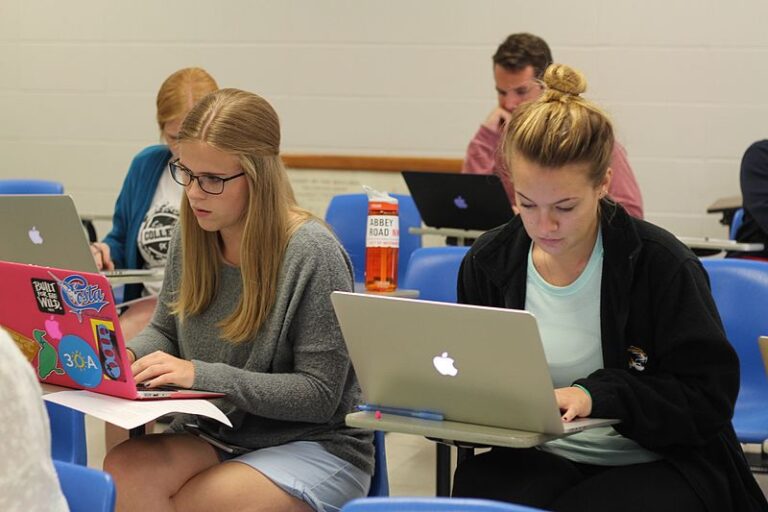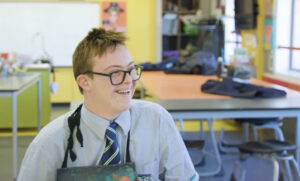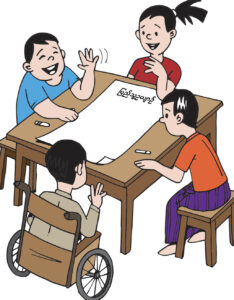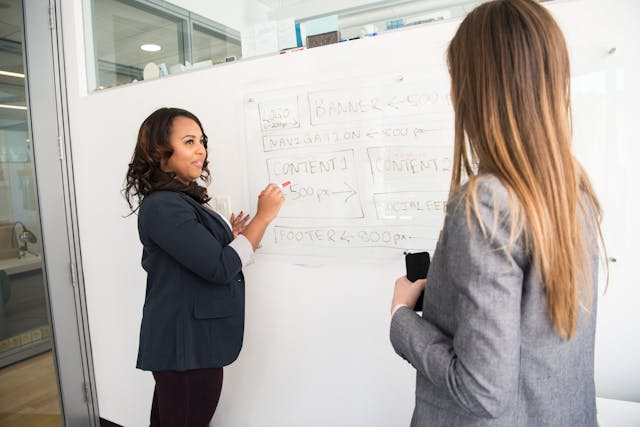Most people have some understanding of the term ‘inclusion’ in educational settings: it refers to the integration of students with disabilities, who may need specialized education, into regular classrooms alongside their non-disabled peers. On the other hand, there’s ‘reverse inclusion’, which stands as its counterpart. This approach enables students without disabilities to experience and partake in special education classes.
Exploring Reverse Inclusion: An In-depth Case Study
At California State University, a dedicated researcher named Linda Baker Kaempfer delved deep into the reverse inclusion topic for her master’s thesis. Her study spotlighted an elementary school’s unique reverse inclusion initiative, comprising 25 typical third-graders and seven special-needs students with varying degrees of disabilities.
Designed with the purpose of nurturing social interaction and mutual learning, this five-week initiative scheduled two sessions each day, lasting 30 to 45 minutes. These sessions, led by the special education instructor, covered diverse subjects like math, art, and science. For each session, two students from the conventional classroom actively participated.
Benefits from Both Sides of the Spectrum
Kaempfer’s analysis, which included pre and post-program surveys and discussions, was telling. She discerned significant benefits for both student groups. Her findings highlighted:
- Regular interactions between typical and special-needs students lead to stronger bonds, both in the academic setting and outside.
- Reverse inclusion fosters an environment where standard behaviors can be naturally modeled and emulated.
- Interactions with peers of different abilities cultivates empathy in non-disabled students.
However, the success of reverse inclusion does come with hurdles. Crafting lessons that appeal to and engage both groups equally can be challenging. Effective communication is paramount, ensuring that both groups participate equally without defaulting to a leader-follower dynamic. Some special-needs students might face communication barriers, causing potential frustrations.
Interestingly, some educators might hesitate, worrying about their students missing academic sessions for reverse inclusion. However, innovative solutions exist: certain schools conduct reverse inclusion during recess or free periods. A special education teacher recounted that students overwhelmingly chose to engage, dispelling initial reservations about them missing out on free time.
Both reverse inclusion and inclusion offer structured environments where students from diverse backgrounds engage and learn together. Reverse inclusion stands out as a superior option for students with specific needs, like medical conditions or behavioral challenges. Additionally, it’s an excellent alternative for institutions that might not have the means to provide dedicated aides for traditional inclusive settings.
Delving Deeper: The Impacts and Implications of Reverse Inclusion
When one steps back to view the broader picture of education, the prominence of inclusive practices stands out as an essential aspect of modern pedagogy. However, while inclusion is a familiar concept to most, its counterpart, reverse inclusion, is gradually gaining traction, prompting many to reevaluate pre-existing paradigms of educational structures.
Holistic Growth and Mutual Respect
One of the most compelling arguments in favor of reverse inclusion is the holistic development it offers to all participants. While typical students gain profound insights into the challenges and strengths of their special-needs counterparts, students with disabilities gain confidence, seeing that they too can teach, influence, and inspire their peers. The interactions foster an environment where every student is valued, and their unique contributions are celebrated. It shifts the mindset from ‘helping’ to ‘collaborating,’ promoting a sense of mutual respect.
Empathy in Action
In a world increasingly marked by divisions, the cultivation of empathy in young minds is more critical than ever. Reverse inclusion acts as a real-world classroom, teaching students the art of understanding, patience, and compassion. By placing typically-developing students in special education settings, they are exposed to diverse perspectives and challenges, prompting them to think beyond their own experiences. This early exposure can shape them into more understanding adults, equipped to navigate a multicultural and diverse world.
Challenges and The Way Forward
Despite its numerous advantages, implementing reverse inclusion is not without its challenges. For one, the variance in learning speeds can sometimes result in either group feeling left out or overwhelmed. Moreover, there’s a logistical aspect. How does one effectively integrate students from different backgrounds without disrupting the flow of regular lessons or compromising the quality of education?
A solution might lie in enhanced teacher training programs. Educators, at the forefront of these initiatives, need to be equipped with strategies to cater to diverse groups simultaneously. Workshops focusing on differentiated instruction, conflict resolution, and adaptive lesson planning can provide the necessary skills. Furthermore, parental involvement and understanding are crucial. Parents need to be apprised of the benefits and potential challenges of reverse inclusion. Their support and feedback can offer invaluable insights, helping educators refine the program for optimum results.
The Bigger Picture
While reverse inclusion is just a single cog in the vast machinery of educational reform, its potential impact is profound. By breaking down barriers from a young age, we’re setting the stage for a future where diversity is not just tolerated but embraced and celebrated. It’s a step towards a world where everyone, irrespective of their abilities, is given an equal platform to grow, learn, and thrive.


















+ There are no comments
Add yours